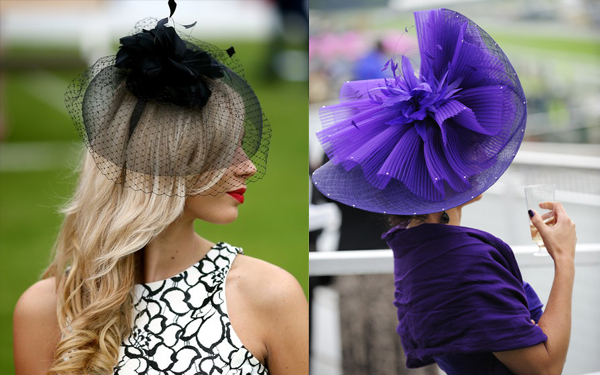当前位置: Language Tips> 英语学习专栏
“一个有教养的女子懂得这两件事:绝不不穿丝袜就离家,绝不不戴帽子就出门。”可可•香奈儿如是说——而又有谁会质疑这个设计出黑色小礼裙的时尚女王呢?

By Camilla Swift
柒月 选注
"A woman's education consists of two lessons: never leave the house without stockings, and never go out without a hat." So decreed Coco Chanel—and who could argue with the woman who invented the little black dress? Up until the early 1900s both men and women wore hats every day—no matter who you were, or what you did. But thanks to two world wars, rationing and the spread of car ownership—not enough headroom inside—the poor old hat gradually went out of fashion.
In the Sixties, women liked to show off their sculpted hairstyles. But far more relaxed looks have become the norm in the decades since, so why hasn't the everyday hat made a comeback? Cordelia Bradley, a Hong Kong-based milliner, blames the popularity of disposable, casual, mass-consumer fashion. She's probably right. After all, most hats—unless we're talking baseball caps—don't go that well with jeans and a T-shirt.
Luckily for benighted milliners, the more formal hats seem to be making a comeback. At smarter race meetings—both in summer and in winter—they are now a must-have item whether compulsory or not, and they are gaining a decent amount of traction at weddings, too. Just take a look at the crowds at the Cheltenham Festival or the Epsom Derby and you'll see hats galore. The fascinator—in my opinion a poor excuse for headgear, often consisting of just a small piece of sinamay and a sad, lonely feather—has fortunately fallen by the wayside and big, show-stopping hats are seen more and more. (Of course, that's not to say that all fascinators are rubbish. There are some lovely and original ones about—but the vast majority of them should be banished …or burnt.)
Winter hats and less formal styles are becoming more fashionable among the country set, too. I kept an eye on the outfits on display during the trot-ups at Badminton Horse Trials this year and noticed many younger riders, male and female, sporting jaunty trilbies or fedoras.
What makes a hat revival even more likely to gain traction is that you no longer have to go to a super-pricey milliner to get yourself a smart and stylish one. The right hat can certainly do wonders for your face—highlighting the better features, hiding the bad (not to mention dodgy hair days)—but they do also attract attention, which may not always be wanted. This, I think, goes some way towards explaining why a hat isn't part of everyone's daily attire. Because wearing one is seen—particularly among the under-30s—as a form of attention-seeking.
After hats fell out of fashion, it was mainly eccentrics and people making an active effort to stand out from the crowd who embraced the daytime hat, which helped to make them seem "edgy". If you look at the people who still wear them, it's a strange mix of country folk with an eye towards tradition or practicality and middle-class east Londoners who want a "statement" look. But the daytime hat seems to be making progress back into the mainstream and I think it's time to get rid of its social stigma.
So we are making headway. Some may think that forcing people to wear hats—inside the Royal Enclosure at Ascot, for instance- is a pain in the neck. But I think it helps the cause. Once you've been made to wear one, you catch the hat bug and there's no going back. If you don't believe me, then just try a couple on. Any milliner will be glad to see you, and you'll probably end up buying three or four. And what's wrong with that?
After all, you need a hat for every outfit, don't you?
Vocabulary
1. revival: 复兴,重新流行。
2. decree: 裁定,颁布。
3. rationing: 定量配给。
4. sculpted: 使成雕塑的,此处指做了造型的。
5. norm: 标准,行为准则。
6. milliner: 女帽制造商;disposable: 用后即丢弃的,一次性的;mass-consumer: 大众消费的。
7. benighted: 陷入黑暗的,这里形容前景黯淡的。
8. smart: (衣服)漂亮的,时髦的;race meeting: (通常延续数天的、多项目的)赛马大会;compulsory: 强制的;decent: 相当不错的;traction: 吸引力,魅力。
9. Cheltenham Festival: 切尔腾汉姆音乐节,以英国当代音乐为主,每年夏季在英国的切尔腾汉姆温泉举行;Epsom Derby: 叶森打吡大赛,在英国叶森马场举行,是英国马坛最重要的赛事之一,也被视为世界上所有打吡大赛的鼻祖;galore: 大量地。
10. 庆幸的是,网眼毛披巾——在我看来就是对帽子的一个可笑的称谓,通常只有一小片西纳梅麻布和一根可怜兮兮的羽毛——渐渐销声匿迹,而又大又惹眼的帽子则风生水起。headgear: 帽子,头饰;sinamay: 西纳梅麻布;show-stopping: 引人注目的,给人留下深刻印象的。
11. banish: 赶走,驱除。
12. outfit: 全套服装;trot-up: 骑马小跑;Badminton Horse Trials: 伯明顿大赛,是于英国伯明顿庄园举行的一年一度的国际马术三项赛,是国际马术三项四星级中最顶级的大赛;sport: v. 惹人注目地穿戴;jaunty: 漂亮时髦的;trilby: (男子戴的)软毡帽;fedora: 宽边男帽。
13. super-pricey: 超级贵的。
14. 戴对帽子的确能提升你的颜值——可以显其精华,隐其糟粕(尤其当你发型不佳的时候),但也能为你赢来关注,尽管有时并不那么如你所愿。dodgy: 差劲的,劣质的。
15. attire: 穿着。
16. eccentric: 行为古怪的人;embrace: 欣然接受;edgy: 奇特的,不寻常的。
17. 如果你看到那些还戴着帽子的人,会发现他们是个奇怪的组合:一些是守着传统或讲求实用的乡下人,另一些则是伦敦东区借此标榜自我的中产阶级。country folk: 乡下人。
18. stigma: 耻辱。
19. make headway: 取得进展。headway此处是双关,一指本意进展,二也暗指头、帽子。
20. Royal Enclosure at Ascot: 指皇家雅士谷马场,位于英国伯克郡。皇家雅士谷赛马会(Royal Ascot Racecourse)是英国年度赛马盛事,每年六月下旬举办;pain in the neck: 讨厌的人或事。
21. 一旦你被说动戴了一顶帽子,你从此就算是着了它的道,再也没有回头之路了。bug: (突然的)强烈兴趣,热衷。
(来源:英语学习杂志 编辑:董静)
上一篇 : 午餐文化
下一篇 :
关注和订阅

电话:8610-84883645
传真:8610-84883500
Email: languagetips@chinadaily.com.cn